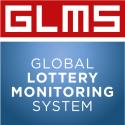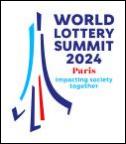In Quest of China Sports Lottery Development Path to Common Prosperity in 2035
As a library, NLM provides access to scientific literature. Inclusion in an NLM database does not imply endorsement of, or agreement with, the contents by NLM or the National Institutes of Health.
May 20024 — The public lottery has roots in a the thousand-year-old gambling culture, morphing into a vital source of funding for social welfare [1]. Within the lottery domain, the modern sports lottery commands substantial consumer interest across diverse cultures and nations [2], pivotal in fueling public sports fundraising efforts. Consider the British Olympic team’s ascent post the Atlanta 1996 Summer Olympics, partially credited to the surge in the national lottery [3].
China’s sports lottery operates under the mantra of “from the people, for the people.” In 1994, the General Office of the State Council authorized five provinces (city) to initiate the China sports lottery, managed by the Ministry of Finance and the General Administration of Sport of China. Post-2001, these lottery funds extensively supported welfare causes, such as allocating 2.75 billion CNY from 2001 to 2008 for constructing and operating the Beijing 2008 Summer Olympics venues, which became sustainable Olympic legacies for Chinese society. The “Guiding Opinions of the General Office of the State Council on Accelerating the Development of the Sports Industry” in 2010 emphasized catering to diverse sports consumption while enhancing livelihoods [4]. This top-level design steered the comprehensive sports industry development. Subsequent initiatives like the “13th Five-Year Plan for Sports Lottery Development” underscored expanding issuance scope and elevating development quality [5]. The 2019 “Outlines for Building a Sports Power” marked the sports industry’s position within China’s long-range economic model, urging the expansion of sports lottery funds for national fitness events [6]. These policies facilitated the rapid growth of the China sports lottery. Sales between 2012 and 2022 totaled 2,198.6 billion CNY, generating 553 billion CNY for sports lottery public welfare funds [7], robustly financing Chinese sports and social initiatives. These achievements highlight the pivotal role of the China sports lottery in supporting socialist causes. Yet, its future must align with public aspirations for an improved standard of living, extending beyond economic metrics.
The Organisation for Economic Cooperation and Development’s 2018 publication, “Beyond GDP” [8], challenges the sole reliance on GDP to gauge national development’s overall “health.” Stiglitz et al. argue that beyond a certain GDP per capita, individuals’ well-being does not linearly progress [9], extending this concept to societies and countries collectively. To address this, they propose non-monetary well-being indicators for a more holistic assessment of social progress to guide policies. Similarly, we posit that China’s sports prowess should not singularly define its status as a dominant power. Instead, the sports sector’s primary contribution lies in advancing public health, the cornerstone of the Chinese path to modernization [10]. Shifting ideologies to prioritize alternative national developmental indicators, like population well-being, raises a crucial question for the future of the China sports lottery: Will its sales authentically reflect ethos of “from the people, for the people”?
For policymakers, we believe the answer to this question rests on two fundamental aspects. On one hand, the China sports lottery serves as a significant source for augmenting welfare activities. The funds allocated toward public sporting facilities, disability causes, and reducing the infrastructural disparities between urban and rural areas undeniably contribute to national development. Therefore, its sales will remain a crucial indicator of its sustainable growth. On the other hand, it is undeniable that sports betting can be addictive and have detrimental effects on an individual’s mental health [11]. From this perspective, unregulated market expansion, characterized by excessive involvement of key sociodemographic groups such as the youth, may lead to increased sports lottery sales, but arguably poses detrimental consequences for Chinese society in the long run. As far as our knowledge extends, neither researchers studying the China sports lottery nor the relevant regulatory bodies have publicly acknowledged this concern, which contradicts China’s common prosperity policy.
The concept of common prosperity has been integral since the establishment of New China [12], but it is under Xi Jinping’s leadership that significant efforts were made to eliminate income inequities resulting from the early developmental model, particularly in terms of urban–rural, regional, and social disparities. The 14th Five-Year Plan outlines that “By 2035, China will have basically achieved socialist modernization” and one of the long-range objectives is “Our people will lead even better lives, with more substantive advances in people’s well-rounded development and common prosperity” [13]. Accordingly, common prosperity, aiming to reduce developmental disparities and promote well-rounded human development, is the essential goal of China’s approach to modernization. Therefore, any efforts to promote development must align with Vision 2035. A healthy growth of the China sports lottery has the potential to support modernization efforts, but a reckless expansion of this industry that encourages widespread gambling conflicts with the people-centered development philosophy. Hence, it is imperative to analyze the historical growth pattern of the China sports lottery to formulate a successful developmental path toward common prosperity.
In the latest 14th Five-Year Plan for Sports Development, the government explicitly guides that, “The development of sports lotteries should simultaneously improve in terms of efficiency and quality, adhere to the positioning of national public welfare lotteries, strengthen the management of sports lotteries, enhance the level of legalized lotteries, and improve the long-term mechanism for the prevention and control of risks in sports lotteries” [14]. Consequently, policymakers acknowledge both the significance of ongoing growth of the China sports lottery and the necessity to mitigate potential adverse consequences in this pursuit. Therefore, there is a strong need for research that addresses both these issues comprehensively. However, none of the existing research conducted so far has adequately addressed both concerns, especially within the overarching context of Vision 2035. To support the all-round and high-quality development of the Chinese path to sports modernization and Vision 2035 [10], this study endeavors, for the first time, to model and forecast the sales of China sports lottery through 2035. The proposed strategies will align closely with the people-centered philosophy and aim to expand market development for both improved social welfare and the promotion of a healthy sports culture.
Objectives
The China sports lottery contributes to sports and welfare causes. This study aims to construct a macro forecasting model supporting its sustained growth aligned with Vision 2035.
Methods
The modeling employed a distributional regression. Sales data of the China sports lottery from 2011 to 2022 were chosen as the response variable, alongside various macro- and event-level explanatory factors.
Results
A gamma distribution best fit the data. In the stable model spanning 2011–2019, urbanization, population dynamics, and FIFA emerged as significant contributors (Chi–square p < 0.05) to the location shift parameter. These three factors retained their significance in the 2011–2022 shock model, where shock itself notably impacted sales (p < 0.001). Utilizing the shock model, we simulated the trajectory of the China sports lottery up to 2035. China’s demographics changes are poised to create structural headwinds starting in 2026, leading to an anticipated decline in sales driven by population shifts from 2032 onward. However, the FIFA effect is projected to continue fortifying this sector.
Conclusions
Beyond offering original insights into the sales trajectory until 2035, specifically concerning new urbanization, negative population growth, and the FIFA effect, this macro forecasting framework can assist in addressing the policy priority of balancing growth with risk mitigation. We recommend policymakers connect market development with mass sports, potentially garnering a dual boost from the growing population of older consumers and the inherent benefits of a “FIFA (mass sports)” effect. A people-centered approach to the China sports lottery could significantly contribute to the long–range objectives of achieving common prosperity outlined in Vision 2035.
View complete original article
SOURCE: National Library of Medicine.


























